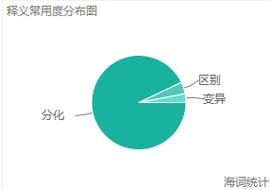
Difference Between GB Ethernet and Ethernet
Understanding the differences between GB Ethernet and Ethernet can be crucial in the realm of networking. Both terms refer to a family of networking technologies, but they have distinct characteristics and applications. Let’s delve into the specifics to help you grasp the nuances between these two.
Basic Definition
GB Ethernet, as the name suggests, stands for Gigabit Ethernet. It is a high-speed networking technology that operates at a data rate of 1 gigabit per second (Gbps). On the other hand, Ethernet is a broader term that encompasses various networking technologies, including 10 Mbps, 100 Mbps, and 1 Gbps Ethernet. It is a standard for wired local area networks (LANs) that defines the physical and data link layer specifications for network communication.

Speed and Performance
One of the most significant differences between GB Ethernet and Ethernet is the speed. GB Ethernet operates at a speed of 1 Gbps, which is ten times faster than the traditional 100 Mbps Ethernet. This increased speed allows for faster data transfer, reduced latency, and improved overall network performance. In scenarios where large amounts of data need to be transferred quickly, such as in data centers or high-performance computing environments, GB Ethernet is the preferred choice.
Physical Layer Specifications
GB Ethernet and Ethernet have different physical layer specifications. GB Ethernet typically uses Category 5e (Cat5e) or higher cables, such as Category 6 (Cat6) or Category 6a (Cat6a), to support the higher data rates. These cables have better shielding and improved performance compared to the older Category 3 (Cat3) cables used in traditional Ethernet. In contrast, Ethernet can use a variety of cables, including Cat3, Cat5, Cat5e, and Cat6, depending on the required speed and distance.
Applications
GB Ethernet and Ethernet find applications in different networking scenarios. GB Ethernet is commonly used in data centers, enterprise networks, and high-performance computing environments where large amounts of data need to be transferred quickly. It is also used in homes and small businesses for gigabit internet connections. Traditional Ethernet, on the other hand, is widely used in homes, small offices, and schools for basic networking needs. It is suitable for applications that do not require high-speed data transfer, such as web browsing, email, and file sharing.
Cost and Compatibility
When it comes to cost and compatibility, GB Ethernet and Ethernet have their own advantages and disadvantages. GB Ethernet is generally more expensive than traditional Ethernet due to the higher-quality cables and equipment required to support the higher data rates. However, the cost difference may be justified by the improved performance and faster data transfer speeds. In terms of compatibility, GB Ethernet is backward compatible with traditional Ethernet, meaning that devices designed for GB Ethernet can also work with traditional Ethernet networks. However, the reverse is not true; devices designed for traditional Ethernet may not work with GB Ethernet networks without proper configuration or hardware upgrades.

Future Trends
The future of networking lies in even higher speeds and more advanced technologies. While GB Ethernet is currently the standard for high-speed networking, there are ongoing developments in the industry that may lead to even faster Ethernet technologies. For example, 10 Gbps Ethernet and 40 Gbps Ethernet are already in use in some data centers, and 100 Gbps Ethernet is expected to become more prevalent in the coming years. These advancements will continue to push the boundaries of networking performance and enable new applications and services.
Conclusion
In conclusion, the difference between GB Ethernet and Ethernet lies in their speed, physical layer specifications, applications, cost, and compatibility. While both technologies are part of the Ethernet family, GB Ethernet offers higher speeds and improved performance, making it suitable for demanding networking scenarios. Understanding these differences can help you make informed decisions when designing and implementing your network infrastructure.



